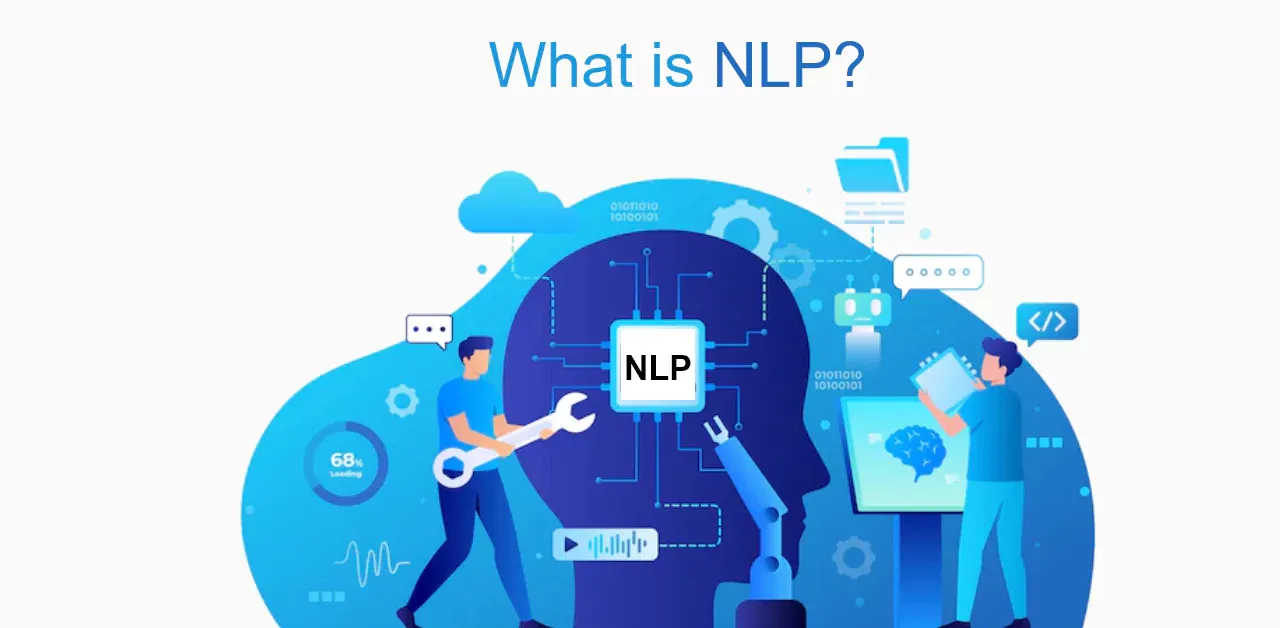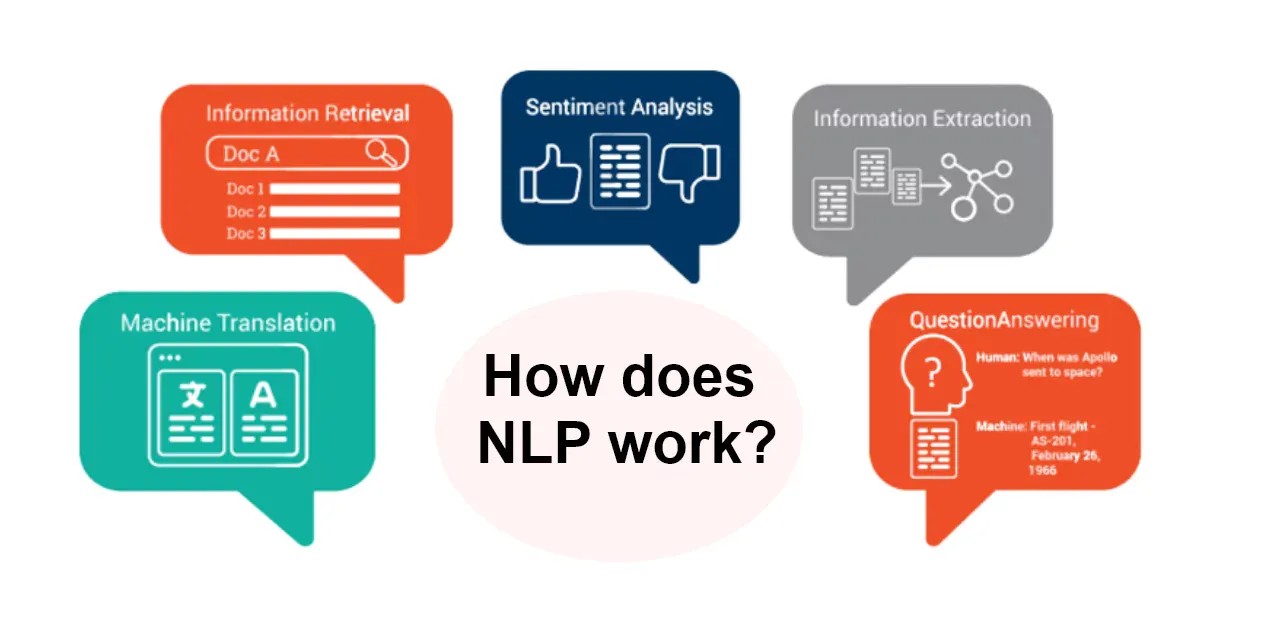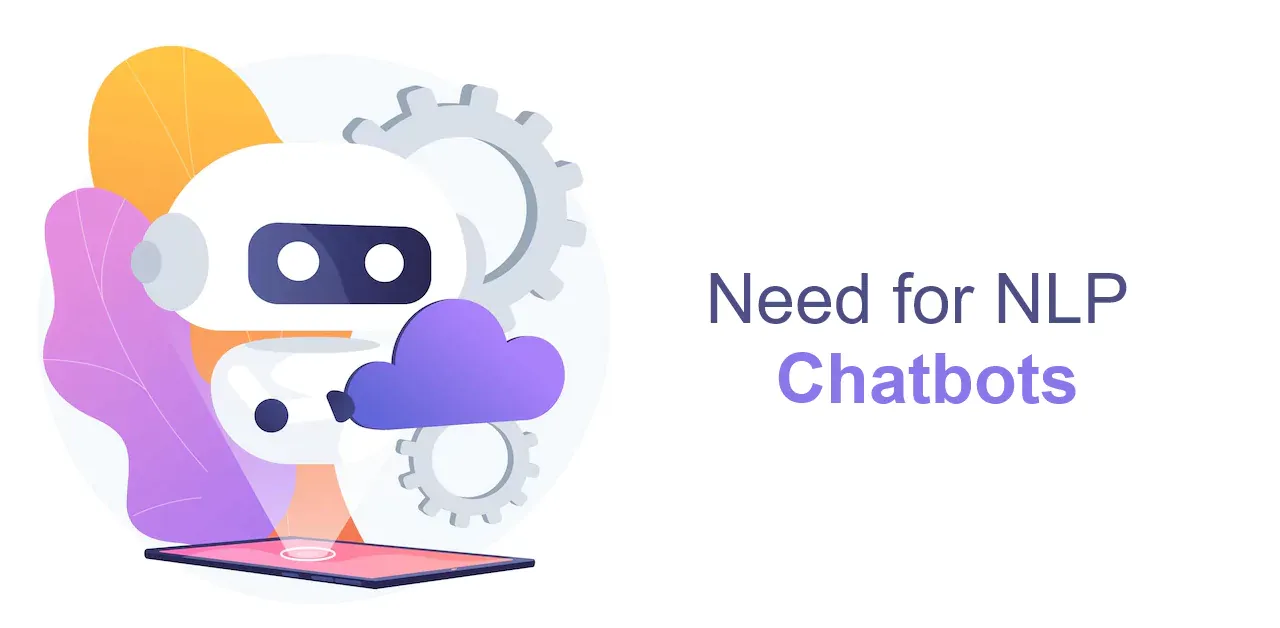Introduction
Are you looking for the best technology to create the ideal chatbot? How can chatbots converse like people? Well, hold on to your socks and get ready for answers. Technology is evolving with each passing day, and the integration of Artificial Intelligence in our day-to-day lives is expanding. Chatbots are one such application that benefits from advancements in the artificial intelligence sector. The global market share of chatbots was USD 521 million in 2021 and will grow to USD 3,411 million by 2030. The use of chatbots is increasing, and it is evident that the use of chatbots increases customer satisfaction while also reducing the bounce rate. Let's understand What NLP is and how it transforms businesses and lives.
What is NLP?

NLP or Natural Language Processing is the ability of a computer software program to understand human language, spoken or written. It has been around for over 50 years, is based on deep learning, and enables computers to understand the inputs given by the user. It is a use case of Artificial Intelligence. It concerns how computers can efficiently process large amounts of natural language.
How does NLP work?

NLP collects user input and uses Artificial Intelligence to process it in a way that the computer can understand. Human language is fragmented into smaller parts so that the grammatical structure and meaning of the words can be understood and analyzed. Text vectorization transforms the texts into a format the machine can understand. After the text is converted, machine learning algorithms make associations between the input and its corresponding output.
Two main phases of NLP
The two main phases involved in natural language processing are 1. Data pre-processing: Human language gets divided and separated into smaller bits so that the computer can understand the grammar and meaning of the words. Data processing involves several tasks:
- Tokenization: Breaking down texts into smaller semantic clauses.
- Part-of-speech-tagging: Separating and tagging words as nouns, adjectives, adverbs, etc.
- Stemming and lemmatization: Reducing words to their root form.
- Stop word removal: Removing words that add little to no information.
2. Algorithm development: After the data has been processed, we need to build an algorithm and train it to understand the natural language and perform tasks accordingly. The two most common NLP algorithms are
- Rule-based approach: Rule-based approach was the earliest approach to NLP algorithms. It relies on hand-crafted grammatical rules and needs the help of linguistic experts and knowledge engineers.
- Machine learning algorithms: Machine learning models are based purely on statistics and learn to perform tasks through the training data. The biggest advantage of machine learning algorithms is that they learn things independently. No manual rules need to be defined; the algorithm uses previous data to make predictions, thus allowing for more flexibility.
What can NLP engines do?
1. Intent Recognition
The inputs are broken down and compiled into user intent through a few words. NLP analyzes sentences through the meaning of words, position, conjugation, and various other factors that human language has.
2. Dealing with Entity
Entities could be data, time, place, location, an item, etc. A NLP chatbot can identify words from user input, match the available entities, or collect additional entities to complete the task.
3. Tense of the verbs
NLP engines can identify and understand the different tenses and conjugation of verbs.
4. Expansion and transfer of vocabulary
NLP engines continuously add new synonyms and use machine learning to expand the chatbot's vocabulary while also transferring vocabulary from one engine to another.
Need for NLP(Natural Language Processing) Chatbots

1. Natural conversation across languages
There are infinite variations that can express a specific statement in many different languages. There are so many different ways to express an emotion. NLP enables us to make a connection between incoming information and the response that the system generates. NLP can understand language semantics, speech phrases, and text structures. Therefore, it enables us to analyze a large amount of data. NLP also allows the chatbot to interpret and understand various emotions through sentiment analysis.
2. Focus on mission-critical tasks
NLP-based chatbots help reduce human efforts in manual tasks such as invoice processing or customer service,, reducing the required resources and increasing employee efficiency. It helps the employees to focus on the important tasks in a far more creative manner.
3. Reduced Cost
NLP chatbots can help businesses significantly reduce costs associated with manpower while increasing customer retention, improving efficiency, and streamlining workflows.
4. Higher Customer Satisfaction
NLP chatbots understand, analyze and prioritize the questions according to their complexity and enable bots to respond faster than a human response. Faster responses help in building customer trust and loyalty. The chatbot can solve almost 60-90% of all chat issues without involving any human agent. Chatbots can answer over 100 questions simultaneously, while a human service advisor can only answer one.
5. Market Research and Analysis
You can generate a lot of versatile and unstructured content from social media. NLP helps structure this data and makes it easy to understand the idea behind the customer reviews, comments, inputs, or queries.
6. Automatically Analyze Customer Feedback
Customer feedback is essential to know what your customers think about your product. However, this data is hard to process. NLP helps you leverage the data collected from the chatbot survey and help you get the required insights to improve the business.
Advantages of NLP(Natural Language Processing) Chatbots
- They are highly accurate and hence reduce the false positivity rate.
- Offers solutions by resolving conflicts and identifies failures in the input through statistical modeling.
- Uses comprehensive communication when dealing with customer responses.
- Can learn faster and address the issues observed while developing a solution.
- It can achieve natural language understanding and capability through lesser training data inputs.
- Re-use training data for future purposes.
- False positives are corrected through straightforward corrective measures.
4 Great NLP-Based Chatbot Platforms
1. BotPenguin
BotPenguin is an AI-powered NLP chatbot platform that helps you build incredible chatbots to communicate and engage with your customers. It is one of the best NLP chatbots in the market, providing incredible solutions to your customer management problems. It offers a lead generation chatbot, customer service, assistant chatbot, and order booking chatbot. BotPenguin can cater to small as well as large businesses.
2. Chatfuel
Chatfuel is a great NLP chatbot because of how easy it is to get started and because it offers some rudimentary NLP you can leverage with a bot. It is most suitable for small to medium companies just starting.
3. DialogFlow
DialogFlow has a voice-enabled Google Home product line. It is relatively easy to use, and most of its interface is point-and-click. Although it is less intuitive than BotPenguin or Chatfuel, it is a great option for those with zero coding abilities. Most suitable for organizations looking to use the Google Home ecosystem.
4. PandoraBots
PandoraBots offers a point-and-click interface that works with AI and ML(machine learning). Using AI and ML gives PandoraBots an edge over platforms like DialogFlow in the NLP sector. It has a robust collection of scripts that helps to make your chatbot more intelligent. Mostly suitable for small to medium enterprises with AI and ML codes ready to be implemented.
What does the Future Of NLP Chatbots look like?

1. Conversational AI
Conversational AI is on the rise. The global market has a compounded annual growth rate of 22% from 2020 through 2025. It is expected to be higher in the 2030s. Conversational AI will expand the capabilities of NLP chatbots and make sophisticated conversational versions more affordable.
2. New Applications
NLP chatbots are well known for their use in the customer service industry. With the advancements in AI, they are expected to become more and more popular in human resource departments. They may also become popular in employee training, IT help, and administrative assistance departments.
3. Growth through social media
It plays an important role in increasing consumer awareness of NLP chatbots. They featured over 100,000 bots in Facebook's Messenger app in 2017. Some NLP chatbots focus on customer service, but many are developed for simple, free-to-use varieties people talk to for fun.
4. Better Security
Cybersecurity in today's times is of extreme importance. Numerous cyber attacks are launched every day. These chatbots are not exempt from the threats of these attacks. NLP chatbots often collect personal information, and protecting this data is a priority. Consumers need to know that these devices are safe and do not have the risk of sensitive information leaking.
5. Greater Transparency
Consumers need to know that they can trust these NLP chatbots. They might be worried about their information leaking. Luckily, advancements in AI and NLP resolve the issue with transparency.


